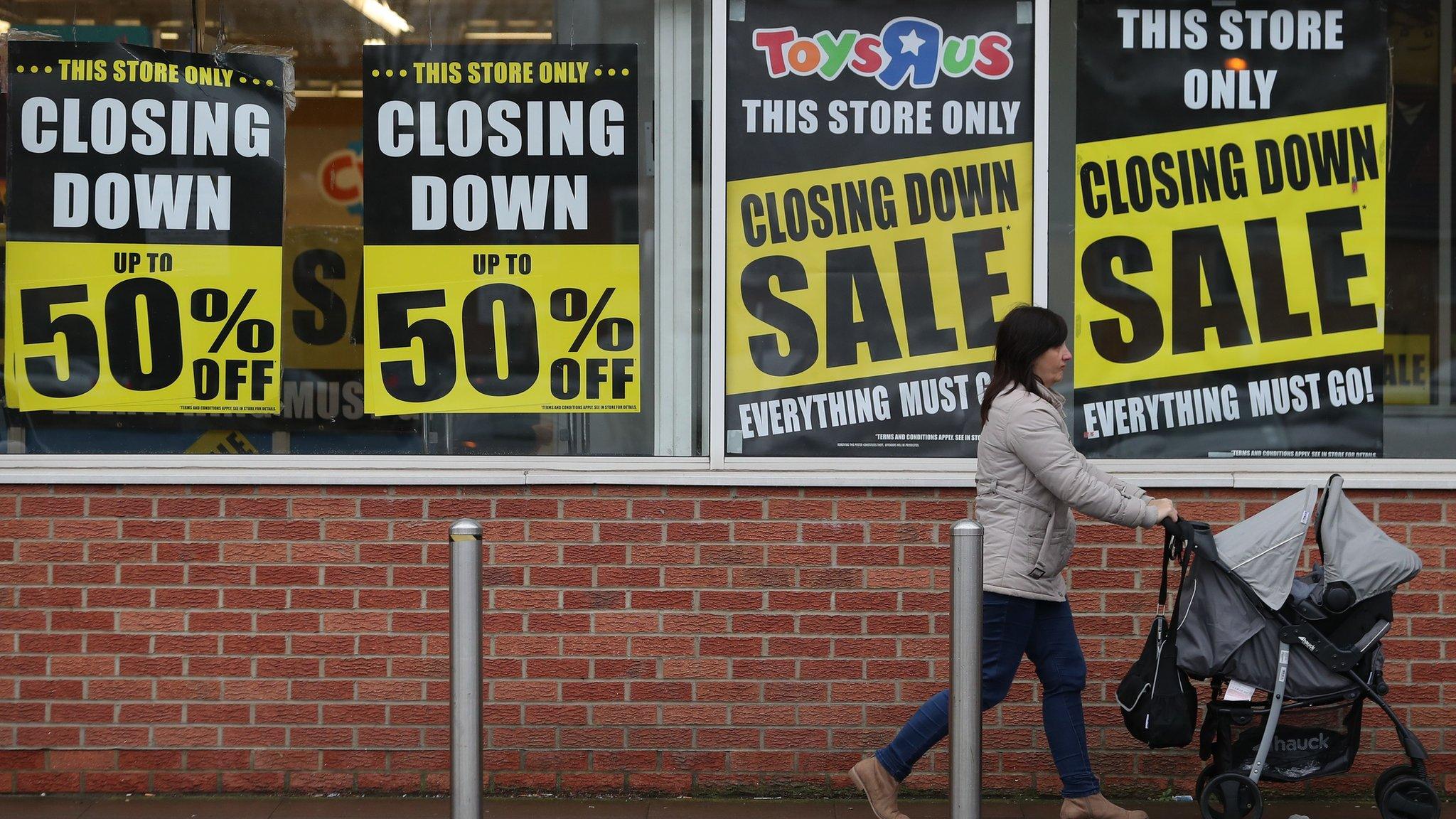Shop closures hit UK's smaller retail centres hardest
- Published
- comments
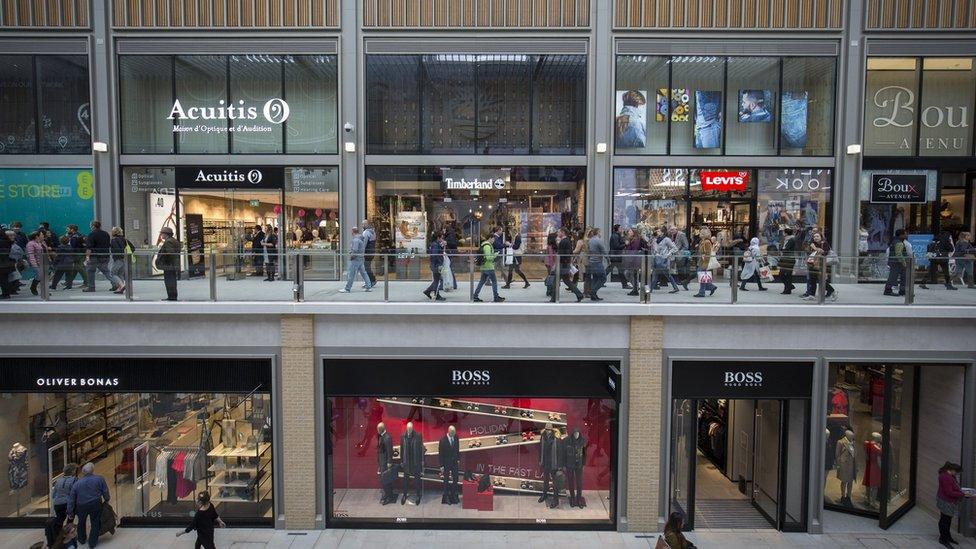
The 800,000 sq ft Westgate Oxford was the biggest shopping centre to open in the UK last year
Smaller shopping centres bore the brunt of store closures last year, according to a study of vacancies in the retail and leisure sectors.
Centres ranked 300 or lower in the Local Data Company's (LDC) index saw vacancies rise from 19.7% to 19.9%.
In contrast, vacancies fell in the UK's top 50 shopping centres, underlining a significant polarisation, the LDC said.
The report also found that niche restaurants are booming, with vegan, Jamaican and South American expanding.
The LDC found that the overall vacancy rate last year rose for the first time since it started measuring it. But this was only a marginal 0.2% rise, giving an annual rate of 11.2% - the same as in 2016.
It meant that headlines about the "death of the High Street" may be overdone, according to LDC's senior relationship manager, Lucy Stainton.
"This increase in vacancy is perhaps more marginal than might have been expected given some of the current rhetoric," she said.
However, the report points out that there have been significant closures and restructuring this year, including Maplin, Carpetright and Toys 'R' Us that will be included in this year's numbers.
Retail parks remain the most desirable location, with occupation rates rising by 0.85% in 2017. However, the closures at chains such as Carpetright and Toys 'R' Us means that growth could be reversed this year.
Barbershops boom
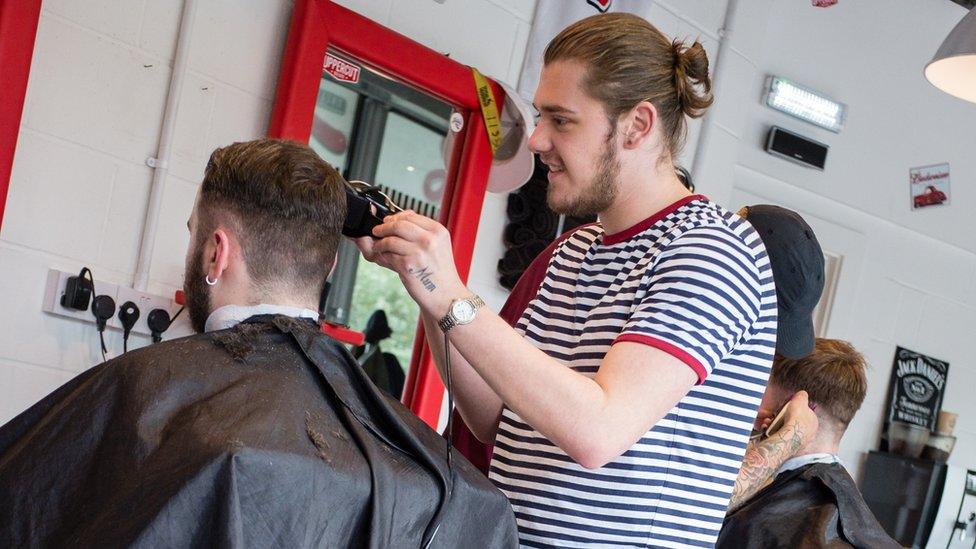
More than 600 barber shops and beauty salons opened last year
Yorkshire and the Humber, Greater London and Scotland were the areas where vacancy rates increased most, while the West Midlands saw the fewest closures.
The report also found:
The loss of so-called service retail units - banks, estate agents, travel agents - overtook the loss of convenience shops, reversing the trend in 2016
Areas that had the highest openings of independent businesses included Tooting (south London), Aberdeen, Liverpool, Newcastle, Great Yarmouth and Folkestone
Barbers and beauty salons saw the biggest openings by sector, with 624 new outlets in 2017
There were 747 pub closures and 711 bank branch closures
Brand names that saw growth in the number of outlets were Lloyds Pharmacy (116), Betfred (135), Subway (62), Cooperative Funeralcare (59) and Greggs (51)
One area that seemed to do particularly well last year was niche restaurants. The number of vegan outlets rose 61.5%, at the expense of vegetarian restaurants, which fell 70%, according to the LDC. The number of Jamaican, Brazilian and Argentinian restaurants also increased.
Since 2012, more than 2,000 barbers have opened their doors, plus 1,235 more coffee shops and 2,000 vaping shops. These are sub-sectors that cannot be replicated online, Ms Stainton said.
She added: "There is no denying that retail is going through an unprecedented era of change, but as our latest research highlights, it's crucial to get underneath the overarching trends to understand the detail beneath this, giving us a glimpse of our future high street."
- Published4 June 2018
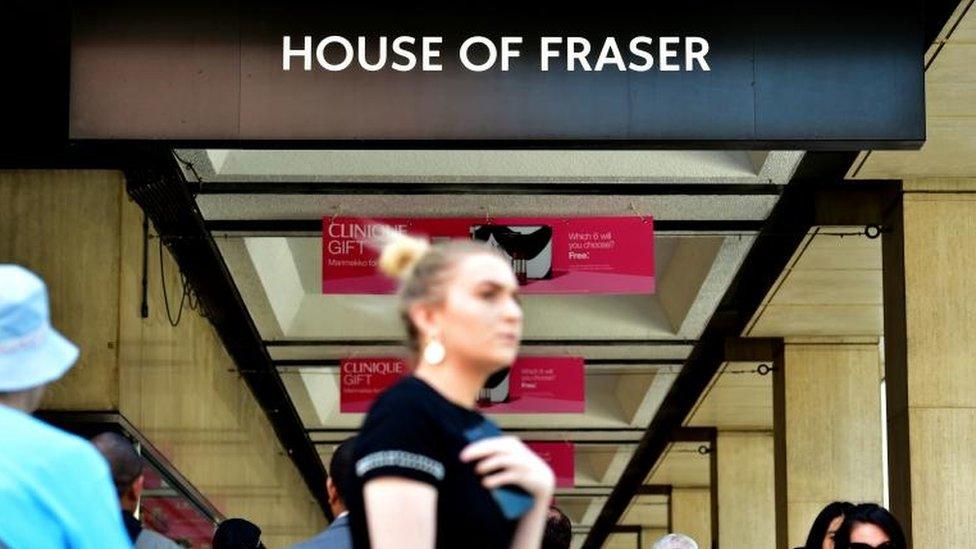
- Published4 June 2018
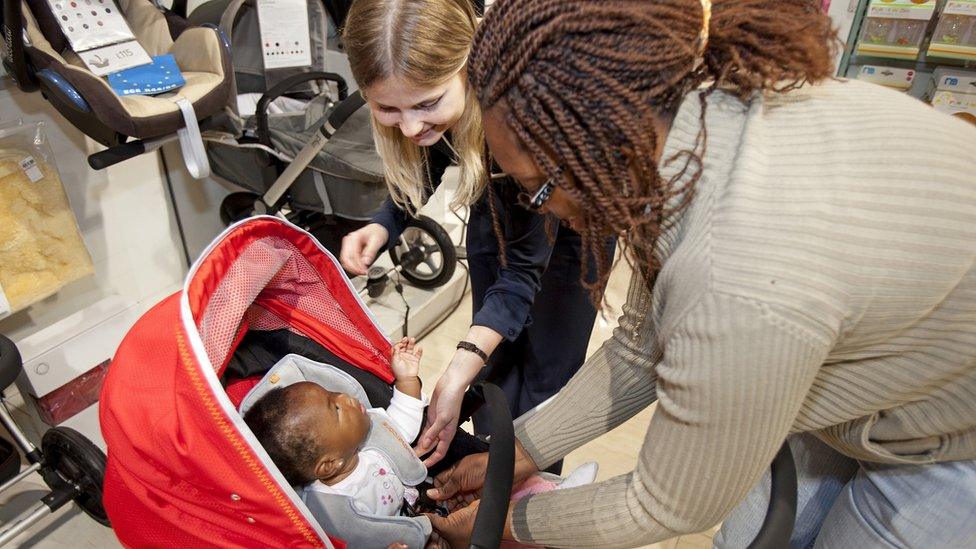
- Published1 March 2018
